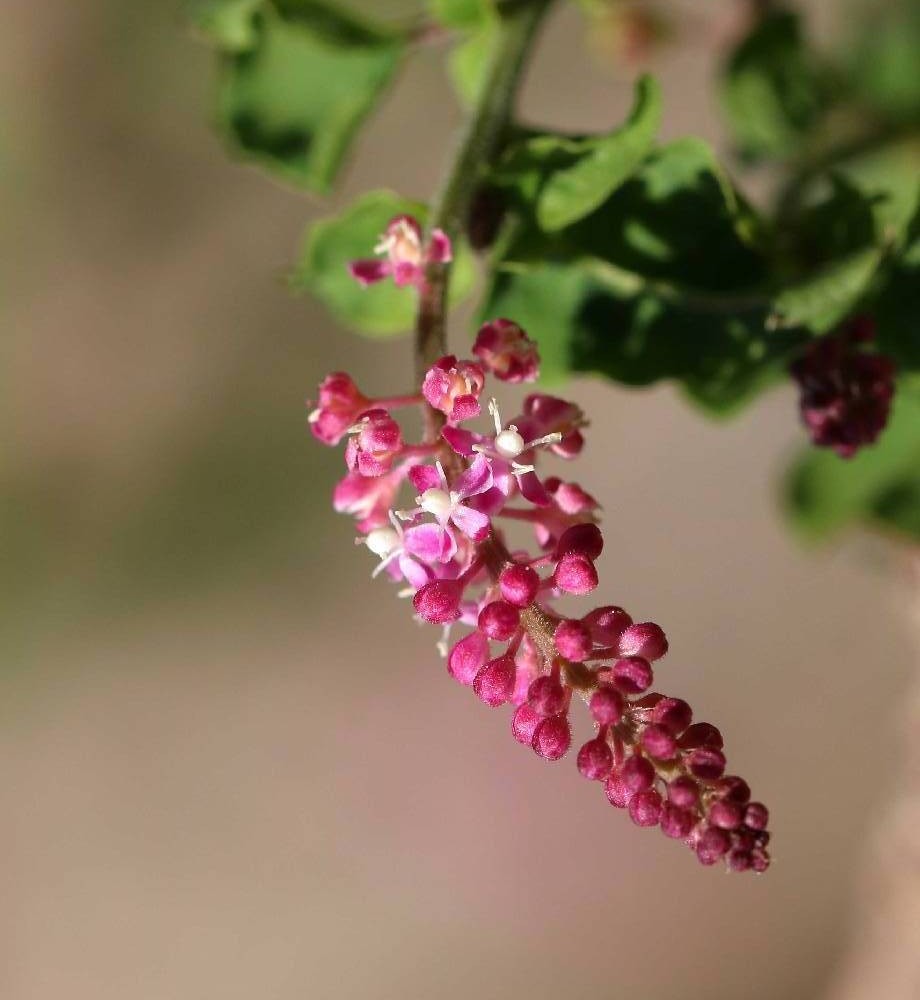Pigeonberry
(Rivina humilis)

Description
Rivina humilis is a species of flowering plant in the family Petiveriaceae. It was formerly placed in the pokeweed family, Phytolaccaceae. It can be found in the southern United States, the Caribbean, Central America, and tropical South America. Common names include pigeonberry, rougeplant, baby peppers, bloodberry, and coralito. The specific epithet means "dwarfish" or "lowly" in Latin, referring to the plant's short stature. Pigeonberry is an erect, vine-like herb, reaching a height of 0.4–2 m (1.3–6.6 ft). The leaves of this evergreen perennial are up to 15 cm (5.9 in) wide and 9 cm (3.5 in), with a petiole 1–11 cm (0.39–4.33 in) in length. Flowers are on racemes 4–15 cm (1.6–5.9 in) long with a peduncle 1–5 cm (0.39–1.97 in) in length and pedicels 2–8 mm (0.079–0.315 in) long. Sepals are 1.5–3.5 mm (0.059–0.138 in) in length and white or green to pink or purplish. The fruit is a glossy, bright red berry 2.5–5 mm (0.098–0.197 in) in diameter. Rivina humilis can be found in forests, thickets, shell middens, hammocks, roadsides, and disturbed areas at elevations from sea level to 1,700 m (5,600 ft). It requires less than partial sun and is tolerant of full shade. It is also tolerant of salt spray and saline soils. It is considered invasive in New Caledonia, where it was likely introduced in 1900. It is considered a weed in Queensland, Australia where it has naturalised, and is also naturalised on Cocos Islands, Réunion, Norfolk Island, Fiji, Tonga, French Polynesia, Hawaii, India and the Galapagos Islands. Rivina is a genus of flowering plants in the family Petiveriaceae. The name honors German botanist Augustus Quirinus Rivinus (1652-1723).
Taxonomic tree:







